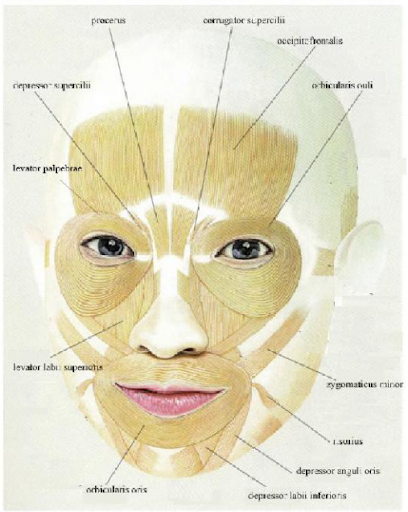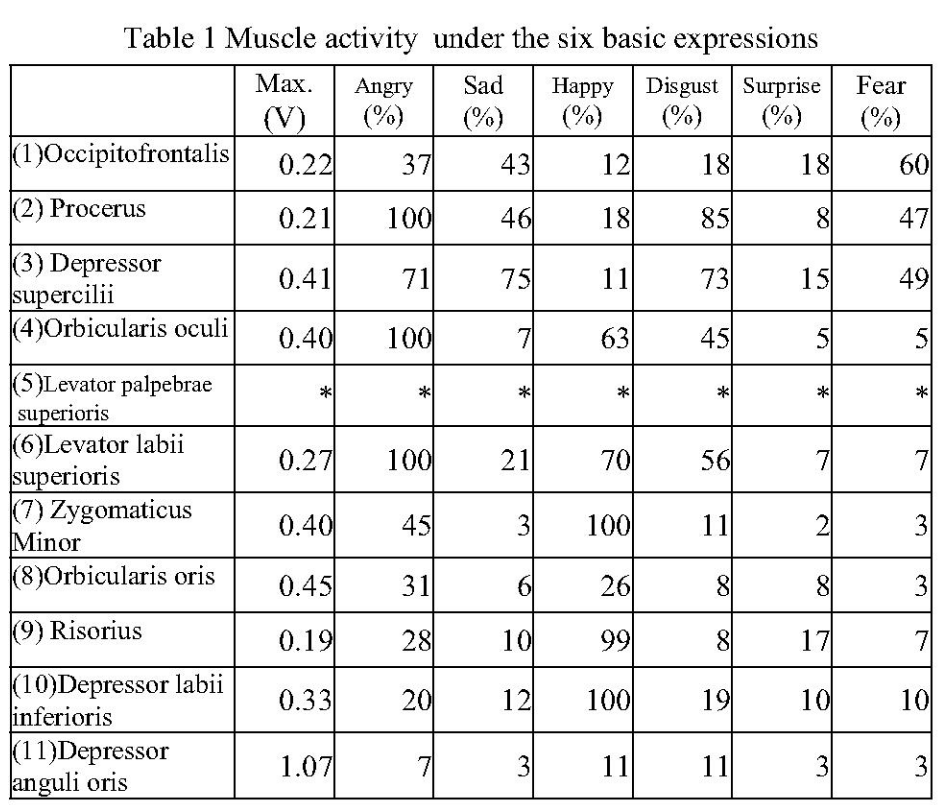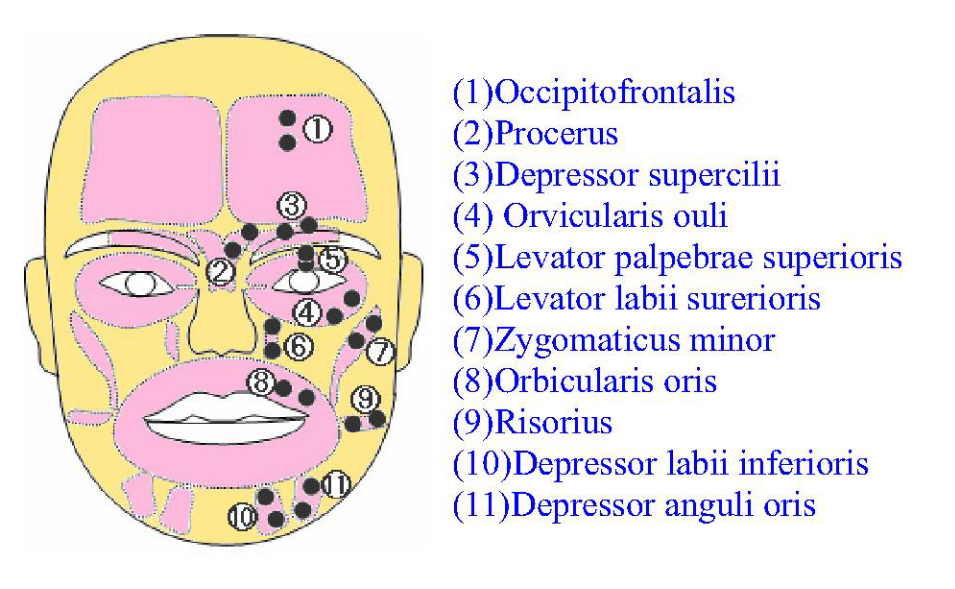Hashimoto, M., & Yokogawa, C., (2006). Development and Control of a Face Robot Imitating Human Muscular Structures.
When the relationship between humans and robots becomes closer there is a need for a more natural communication process. Thus robots need to be able to make facial expressions.

The figure displays the muscle structure used to make human’s facial expressions. The muscles shrink to distort the shape of the skin, which causes a facial expression.
The paper explains how they made a robot capable of having facial expressions: The linear-shaped muscles in the face are from one end attached to the skin, from the other end they are attached to the skeleton. The circular-shaped muscles are only attached to the skin.
For the eyes: one muscle (the elevator muscle of the upper eyelid) opens the eye when it shrinks, another is a ring shaped muscle to close the eyelid (the musculus orbicularis oculi). There is a tissue called the tarsal plate on the back of a human’s eyelid. It is as soft as cartilage and keeps the shapes and circumference of the human’s eyelid.
The skin is made from oil and silicon rubber.
The skeleton is made from FRP (fiberglass reinforced plastics).
The muscles are made of urethane.
The stripe fiber part is made with wire. In case of the linear-shaped muscle, one end of the fiber unites the robotic muscle, the other part passes through the robotic muscle and is connected to the motor in the frame. For circular muscles both ends of the stripe fiber part are connected with the motors.
The eyeball is made for toys.
The motor used are small DC servo motors.
The internal frame supports the other parts such as the skeleton, the skin, and so on.
The following is the manner to control the face robot based on muscle activity:
- The maximum activity of each muscle is measured when the subject shrinks each muscle to the best of their ability.
- The muscle activities are measured under the expressions: angry, sad, happy, disgust, surprise and fear.
- The contribution rates of each muscle for the facial expressions are determined.
- The maximum skin deformation of human and robot are measured to determine the wire tensions of the face robot.
- The human’s muscle activities under each facial expression are transformed to the wire tension.
- The wire tensions are generated by the motors.
The muscle activities under the six basic facial expressions are measured and the percentages to the maximum activities for each facial expression are listed in Table1.



The markers are attached on the end point of the human’s muscle and the movements of the markers are observed by a digital video camera. In Figure 18 the red points are the initial positions of the markers and the blue lines are the trajectories of the movements.

The face robot is controlled using three kinds of robotic muscles as the first step: the Procerus, Depressor supercilii and Levator palpebrae superioris. These are located on the upper part of the face.
The skin displacements of human and the robot are listed in Table2.
The robotic skin displacements are about the same as those by our human test subjects, the results show the effectiveness of muscle activity based control.